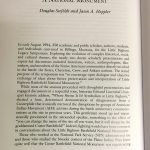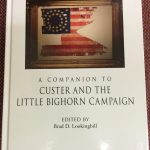In November of 2019, I was contacted by Sandy Hausman of National Public Radio affiliate WVTF to react to a then-brewing controversy in Charlottesville, Virginia over the depiction of Sacagawea–the Native American woman who guided the Lewis and Clark expedition across much of the Rocky Mountain West–in a 1919 sculpture commemorating the local leaders of the Corps of Discovery situated conspicuously in the middle of a downtown street. According to Hausman, “City leaders in Charlottesville, Va., will remove a statue of Lewis and Clark because their guide, Sacagawea, is portrayed as weak. They will replace it with one that highlights her importance.” My brief contribution to the “In Virginia, Sacagawea Gets Her Own Statue,” begins around 2:00. While a post-doc at UVa, I directed the Lewis and Clark Bicentennial project from 2002-04. During that time I taught my first digital history courses to undergraduate in the Media Studies program. One of the early student projects from the fall 2002 semester, “Lewis and Clark: Nostalgia and the Frontier,” included an examination of Charles Keck’s sculpture commissioned by Paul Goodloe McIntire. The students, Stephen Coleman, Lisa Jensen, and Katherine Schumann, created a small thematic research collection that they divided into four sections: Description, Construction, Dedication, and Reaction. It is from this collection that the passage I read in the NPR story by Keck on the composition of his sculpture comes from.
Tag Archives: History & Memory
But Wait…There’s More!
- An essay that I co-authored with Jason Heppler
- A collection of original essays that contains a piece I co-authored.
Arriving in my mailbox on the same day as the other volume, A Companion to Custer and the Little Bighorn Campaign contains a long essay, “A National Monument,” that I researched and wrote in collaboration with a former UNL graduate advisee Jason Heppler. This is another examination of history and memory in an important landscape in the American West similar to my earlier journal articles on sites in New Mexico and Arizona. In addition to using traditional research methods, Jason and I also employed Digital Humanities text analysis tools to investigate the topics and rhetoric contained in two of the three editions of the official interpretive handbook for the Little Bighorn battlefield National Monument site. I hope that students of the history of the United States, the American West, and History & Memory, along with those who are fascinated with the Native American experience and the mythic figure of George Armstrong Custer, will find this piece a welcome contribution to that voluminous historiography.

